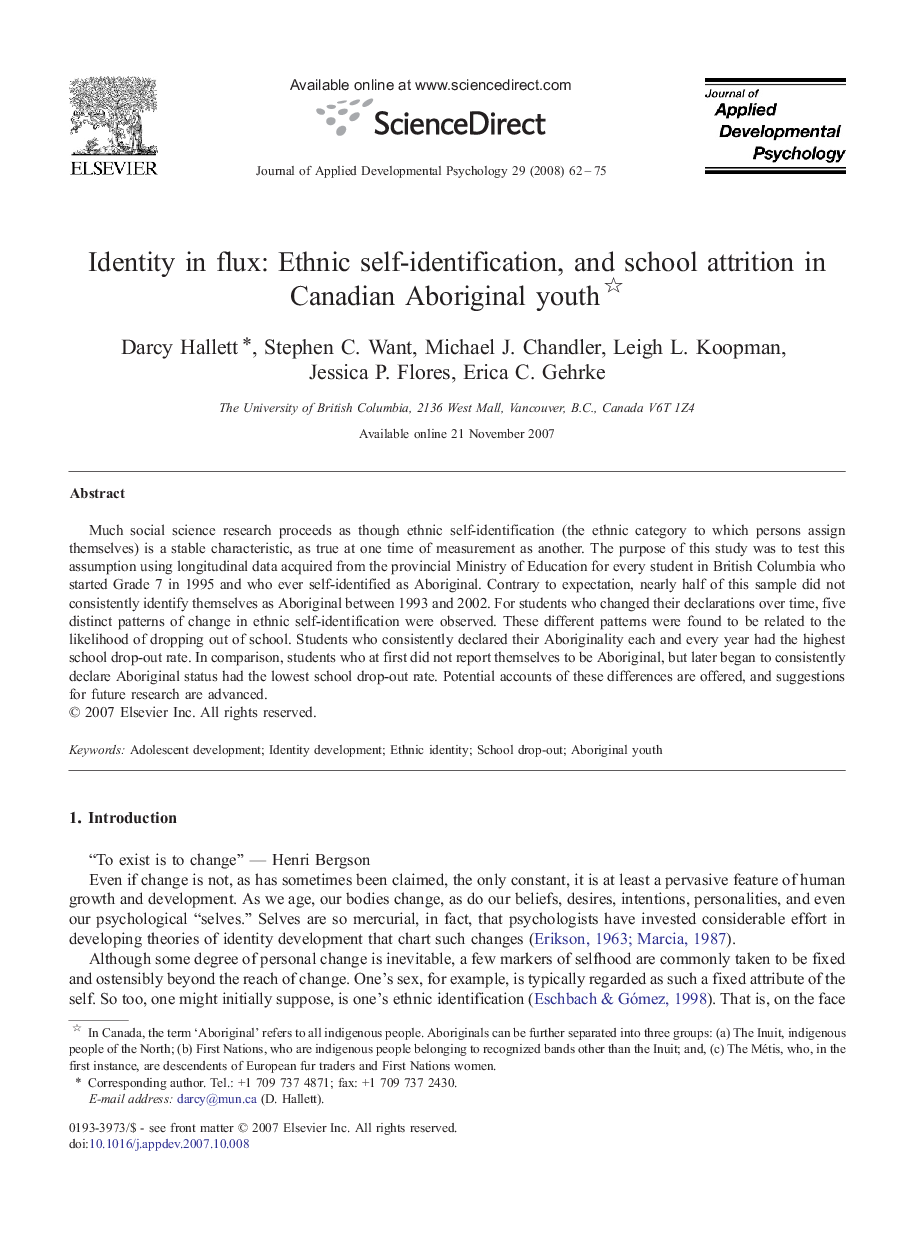| Article ID | Journal | Published Year | Pages | File Type |
|---|---|---|---|---|
| 359998 | Journal of Applied Developmental Psychology | 2008 | 14 Pages |
Much social science research proceeds as though ethnic self-identification (the ethnic category to which persons assign themselves) is a stable characteristic, as true at one time of measurement as another. The purpose of this study was to test this assumption using longitudinal data acquired from the provincial Ministry of Education for every student in British Columbia who started Grade 7 in 1995 and who ever self-identified as Aboriginal. Contrary to expectation, nearly half of this sample did not consistently identify themselves as Aboriginal between 1993 and 2002. For students who changed their declarations over time, five distinct patterns of change in ethnic self-identification were observed. These different patterns were found to be related to the likelihood of dropping out of school. Students who consistently declared their Aboriginality each and every year had the highest school drop-out rate. In comparison, students who at first did not report themselves to be Aboriginal, but later began to consistently declare Aboriginal status had the lowest school drop-out rate. Potential accounts of these differences are offered, and suggestions for future research are advanced.
